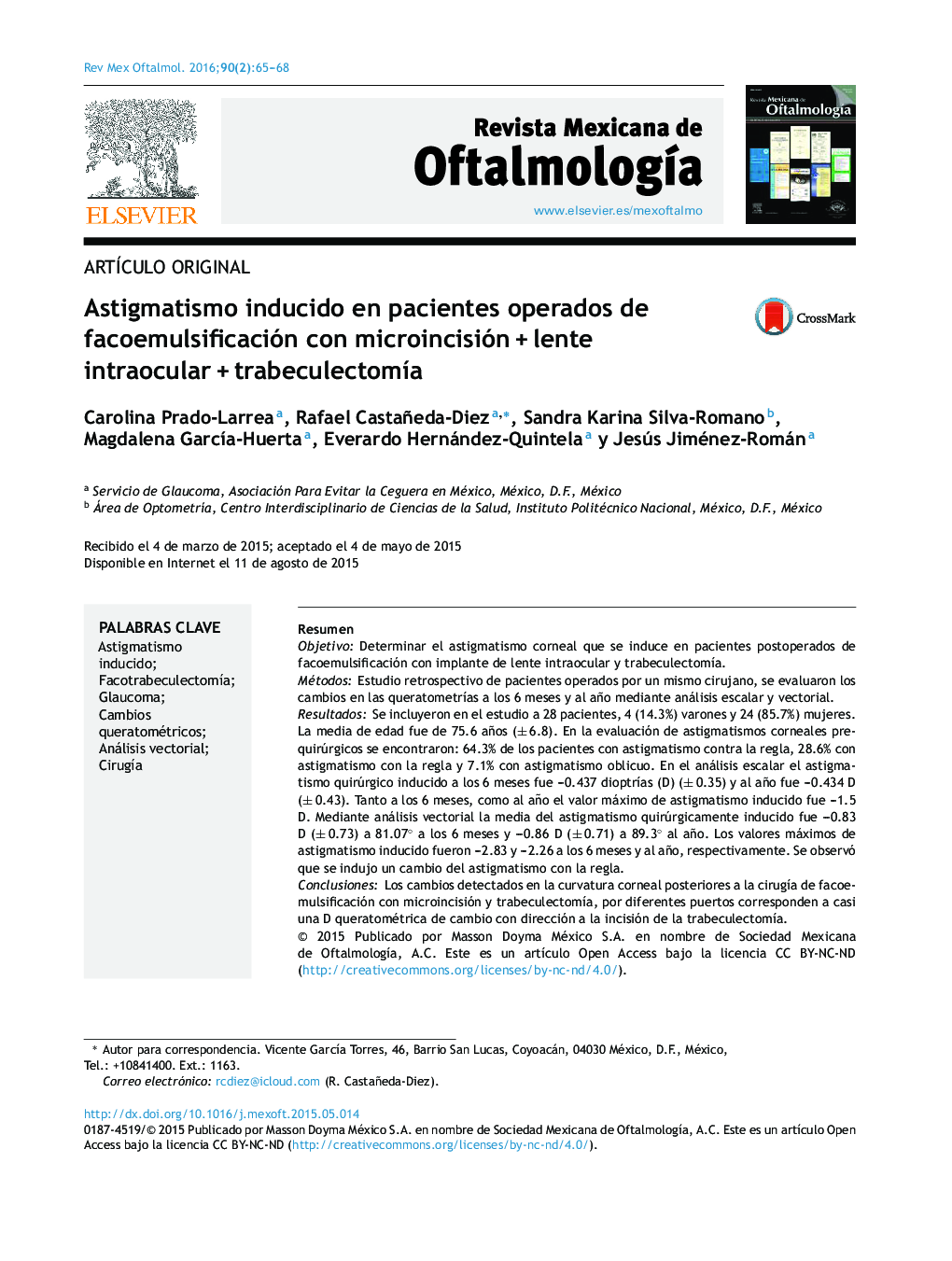| Article ID | Journal | Published Year | Pages | File Type |
|---|---|---|---|---|
| 4032325 | Revista Mexicana de Oftalmología | 2016 | 4 Pages |
ResumenObjetivoDeterminar el astigmatismo corneal que se induce en pacientes postoperados de facoemulsificación con implante de lente intraocular y trabeculectomía.MétodosEstudio retrospectivo de pacientes operados por un mismo cirujano, se evaluaron los cambios en las queratometrías a los 6 meses y al año mediante análisis escalar y vectorial.ResultadosSe incluyeron en el estudio a 28 pacientes, 4 (14.3%) varones y 24 (85.7%) mujeres. La media de edad fue de 75.6 años (± 6.8). En la evaluación de astigmatismos corneales prequirúrgicos se encontraron: 64.3% de los pacientes con astigmatismo contra la regla, 28.6% con astigmatismo con la regla y 7.1% con astigmatismo oblicuo. En el análisis escalar el astigmatismo quirúrgico inducido a los 6 meses fue –0.437 dioptrías (D) (± 0.35) y al año fue –0.434 D (± 0.43). Tanto a los 6 meses, como al año el valor máximo de astigmatismo inducido fue –1.5 D. Mediante análisis vectorial la media del astigmatismo quirúrgicamente inducido fue –0.83 D (± 0.73) a 81.07° a los 6 meses y –0.86 D (± 0.71) a 89.3° al año. Los valores máximos de astigmatismo inducido fueron –2.83 y –2.26 a los 6 meses y al año, respectivamente. Se observó que se indujo un cambio del astigmatismo con la regla.ConclusionesLos cambios detectados en la curvatura corneal posteriores a la cirugía de facoemulsificación con microincisión y trabeculectomía, por diferentes puertos corresponden a casi una D queratométrica de cambio con dirección a la incisión de la trabeculectomía.
ObjectiveTo determine the corneal astigmatism induced in patients after phacoemulsification with intraocular lens implantation and trabeculectomy. Keratometric changes were measured with an automated keratometer, patients were evaluated for a period of one year follow-up.MethodsObservational retrospective study. Changes in keratometry were evaluated at 6 months and 1 year using scalar and vector analysis. All surgeries were performed by the same expert surgeon.Results28 patients were included in this study, 4 (14.3%) men and 24 (85.7%) women. The mean age was 75.6 years (±6.8). Preoperative evaluation of corneal astigmatism revealed that 64.3% against-therule, 28.6% of patients had a with-the-rule, and 7.1% had an oblique astigmatism. In the scalar analysis, surgical induced astigmatism at 6 months was –0.437 diopters (D) (±0.35) and –0.434 D at 1 year (±0.43). Both at 6 months and 1 year, the maximum value of induced astigmatism was –1.5 D. Through vector analysis, the average of the surgically induced astigmatism was –0.83 D (±0.73) and the axis was 81.07° at 6 months and –0.86 D (±0.71) and the axis was 89.3° at 1 year. The maximum values of induced astigmatism were –2.83 and –2.26 at 6 months and 1 year respectively.ConclusionsThe changes detected in astigmatism following microincisional phacoemulsification and trabeculectomy correspond to about one diopter keratometric change the direction of the incisión trabeculectomy.
